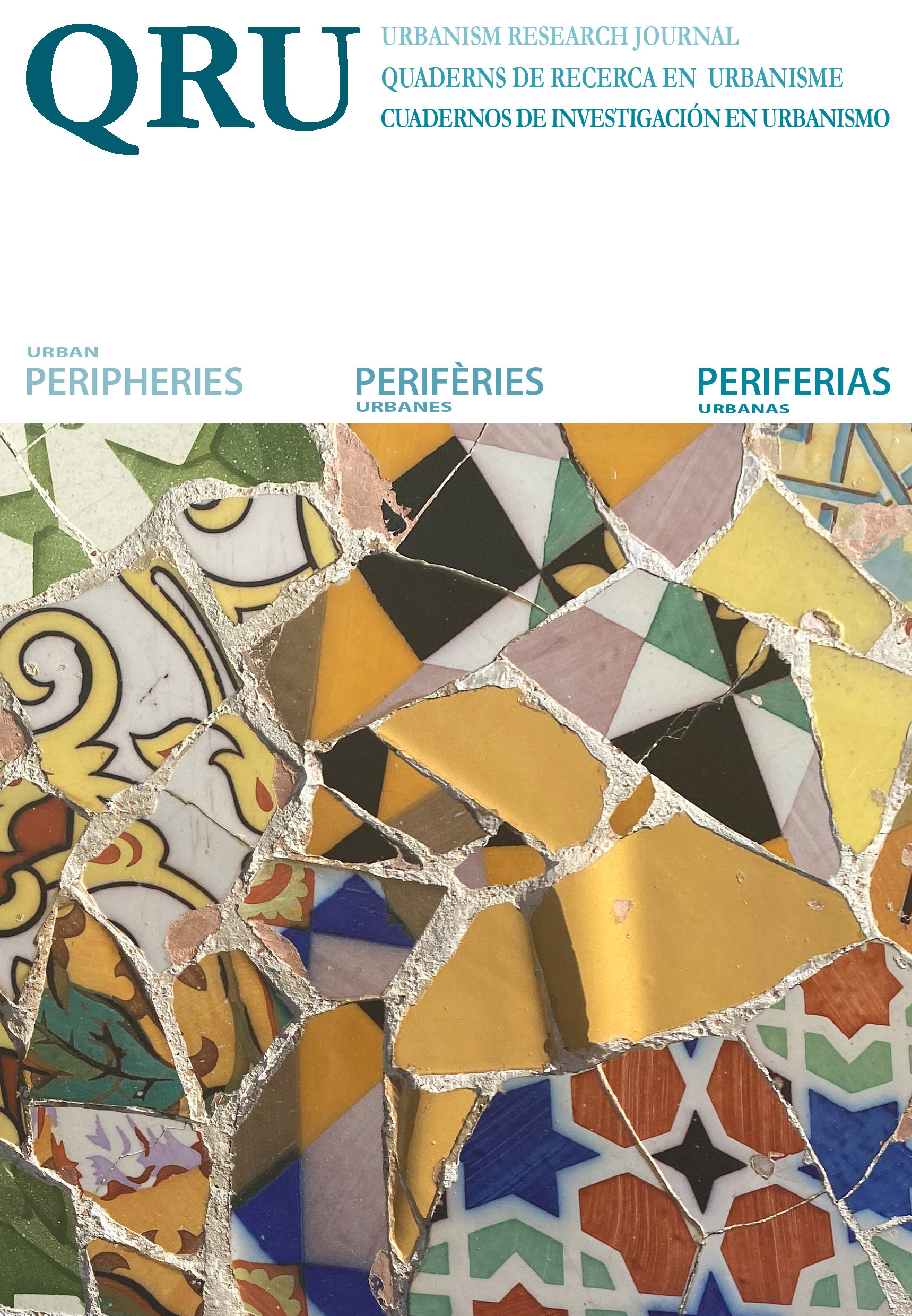Fragmentos de periferias urbanas contemporáneas, contexto de proyecto
DOI:
https://doi.org/10.5821/qru.12744Abstract
Uno de los retos urbanos contemporáneos es el de las periferias urbanas. Sus formas surgidas en los márgenes de la ciudad, se originan a partir de fragmentos añadidos a la ciudad construida, desafiando los límites y proponiendo la nueva ciudad. Un territorio de contrastes, impreciso y cambiante en su propia naturaleza, que plantea un reto su descripción, interpretación, valoración y en consecuencia un desafío para su efectiva intervención.
Para esta aproximación se ha trabajado sobre la idea de periferia en sus diversas escalas de intervención, teniendo en cuenta tanto las lógicas del conjunto como las individuales de cada fragmento. Ensayos de representación y miradas contrapuestas sobre estos territorios buscan profundizar en cómo mejorar las periferias desde un punto de vista morfológico y espacial para potenciar su habitabilidad.
Revertir esta condición, que los convierte en frágiles y vulnerables, continúa presente en los diversos contextos urbanos en los que se manifiesta. Las miradas entrecruzadas sobre el proyecto de las periferias urbanas, permiten reconocer y caracterizar de manera más precisas situaciones territoriales diversas y orientar propuestas y formas urbanas futuras como base a nuevas lógicas proyectuales.
Downloads
Published
Issue
Section
License
Those authors who have publications with this journal, accept the following terms:
a. Authors will retain their copyright and guarantee the journal the right of first publication of their work, which will be simultaneously subject to the Creative Commons CC BY-NC-ND-4.0 recognition license that allows third parties to share the work provided that its author and its first publication are indicated in this journal, but they cannot be changed or used commercially.
b. Authors may adopt other non-exclusive license agreements for the distribution of the version of the published work (eg: deposit it in an institutional telematic archive or publish it in a monographic volume) provided that the initial publication in this journal is indicated.
c. Authors are allowed and recommended to disseminate their work through the Internet (e.g. in institutional telematic files or on their website) before and during the submission process, which can lead to interesting exchanges and increase citations. of the published work. (See The effect of open access).













